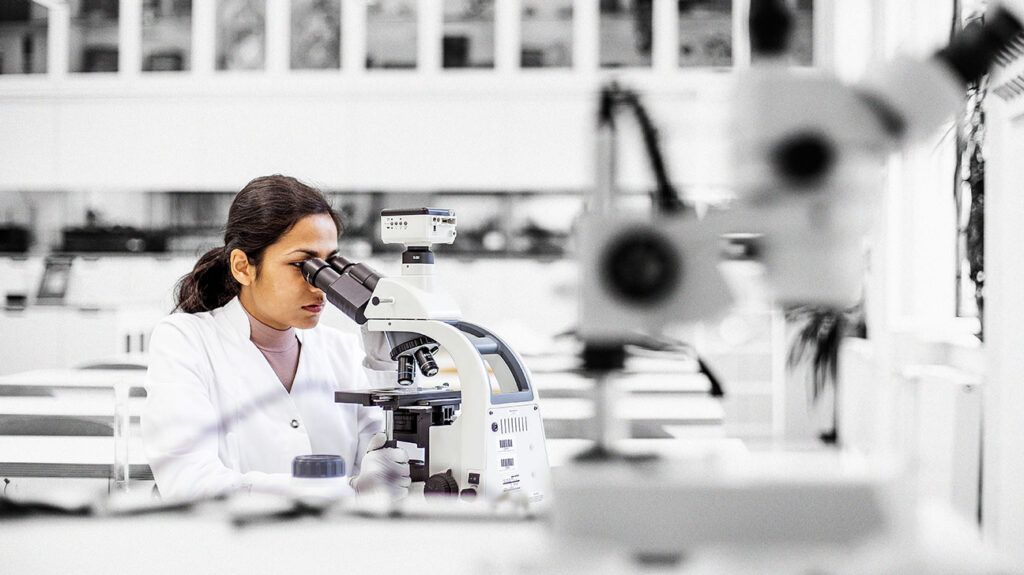Skin biopsies can help diagnose eczema, but they are not usually necessary. Most times, doctors can diagnose eczema simply by examining a person’s skin and symptoms.
Eczema is a group of inflammatory skin conditions that can cause skin rashes, dryness, and itching. Doctors may perform skin biopsies to confirm an eczema diagnosis or rule out other skin conditions.
A skin biopsy is a procedure that involves removing a sample of skin for analysis under a microscope.
This article outlines the purpose and procedure of skin biopsies for eczema, including other diagnostic steps a doctor may take.

According to the National Eczema Association (NEA), a clinical examination is usually sufficient for healthcare professionals to diagnose eczema.
However, a doctor, such as a dermatologist, may order a skin biopsy to rule out conditions that can cause similar symptoms. Examples of such conditions include:
- zinc deficiency
- seborrheic dermatitis
- scabies
- cutaneous T-cell lymphoma
- HIV-associated dermatitis
Dermatologists can use the results of a skin biopsy to determine the cause of a person’s skin complaint and inform decisions about appropriate treatments.
As the American Academy of Dermatology (AAD) explains, a skin biopsy is an in-office procedure, during which a healthcare professional, such as a dermatologist, removes a small amount of skin they later send to a laboratory for further analysis.
According to the United Kingdom’s National Health Service (NHS), most skin biopsies take around 20 minutes.
People can expect the following steps during a skin biopsy:
Disinfecting and numbing the area
Before starting the procedure, the dermatologist will wipe the area with an antiseptic solution to disinfect the skin.
They will then inject the area with a local anesthetic so the person does not feel any pain during the procedure. The anesthetic injection may sting a little as the needle pierces the skin, but this is only temporary.
Removing the skin sample
Dermatologists will use one of the following biopsy procedures to remove a sample of the affected skin:
- Shave biopsy: During a shave biopsy, a healthcare professional uses a tool similar to a razor blade to shave off a thin layer of surface skin.
- Punch biopsy: A healthcare professional uses a tube-shaped tool with a cookie-cutter action to “punch” through and remove multiple layers of skin.
- Curette biopsy: During this type, a healthcare professional uses a pen-like tool with a metal loop at one end to scrape away a skin sample.
- Incisional biopsy: In an incisional biopsy, a healthcare professional uses a scalpel to remove part of the affected skin.
Treating the wound
If the wound is bleeding, the dermatologist will apply pressure or medication to it to help stop the bleeding. People who undergo a punch biopsy or incisional biopsy may require stitches to close the wound.
The dermatologist will then apply petroleum jelly to the wound to keep it moist and cover the area with a bandage. According to the AAD, moistening and covering the wound helps it heal more quickly.
After the skin biopsy procedure, the dermatologist will provide instructions on caring for the wound at home. This may involve:
- cleansing the area
- applying a small amount of petroleum jelly
- replacing the bandage
After a dermatologist performs a skin biopsy, they will send the sample to a laboratory. There, a specialist called a dermatopathologist analyzes the sample under a microscope to help diagnose the condition.
They will then write a report of their findings and send this back to the dermatologist.
Upon reviewing the biopsy report, the dermatologist will consider what treatment, if any, the person needs. They will contact the person to discuss the results and any necessary next steps.
According to the NHS, biopsy results are often available within a few days. However, this may depend on various factors, such as:
- the urgency of the condition
- the individual hospital’s policy
- any further necessary tests
If the biopsy results are inconclusive, the healthcare professional may repeat the process.
According to the AAD, the diagnostic workup for eczema typically begins with the doctor examining the person’s skin complaint.
The doctor will then take a detailed medical history and ask questions about a person’s symptoms, including when they began and if anything appears to trigger them. They may also ask if the person has a personal or family history of the following:
- atopic dermatitis
- asthma
- hay fever
- allergies
According to the NEA, a clinical exam and medical history are usually sufficient for a doctor to diagnose eczema. However, skin biopsies may sometimes be necessary to confirm the diagnosis and rule out other skin conditions.
Healthcare professionals can usually diagnose eczema simply by examining a person’s skin and asking questions about their symptoms or any relevant medical history.
However, a skin biopsy may sometimes be necessary to confirm the diagnosis and rule out other skin conditions. This process involves removing a sample of the affected skin and sending it to a laboratory for a more detailed analysis.
Skin biopsies are relatively painless in-office procedures that typically take around 20 minutes. Most of the time, a person should receive their biopsy results within a few days.
